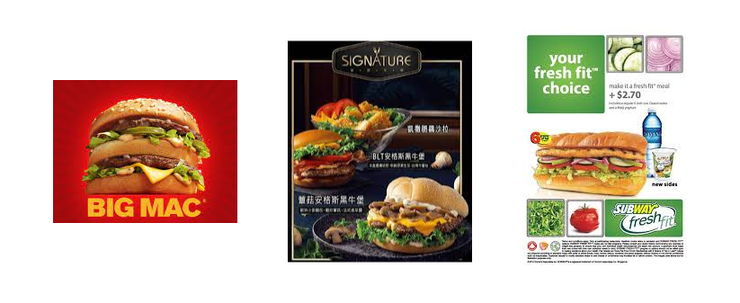Five ways to help you plan your product from scratch

Planning a product, but have no clue?
The company recently wanted to develop a new business, and decided to cooperate with a textile company to jointly create an app that can auction thermal clothing online before winter. Since it is a new business for the company, everyone is very unfamiliar.
The supervisor called Ade and asked him to plan the process and function of the product. Ade used to do projects, and all needs can be clarified step by step from vague concepts to a complete user interface through user interviews. However, this new task made Ade very distressed, and after thinking about it for a long time, he had no clue. But what Ade didn't know was that requirements were only one starting point for planning a product.
When doing product planning, you often feel that you don’t know where to start? You may also have some rough ideas, such as wanting to plan a module for special sales or a module for random product tours, etc. But when it came time to actually define the function, I found that I didn't know how to display and hand over the details to the designer or draw it myself.
Many people who transfer from project to product manager often suffer from this torture during the transition period.
(The PM of some companies has to plan the UI by themselves, while others leave it to the designer)
Products, start with people
Jobs once said: " I never ask customers about their needs, because they don't know themselves. " When I see this sentence, I always think that Jobs has the following sentence: "When they see Apple's products, they will You know what you need."
Jobs has absolute confidence in his products because he understands that products always come from human nature and insight into human nature.
A product is a tool, and a tool is meant to help humans solve problems, improve existing procedures, save time, and so on . Therefore, product planning is definitely not only catalyzed by deducing existing requirements, but also planning product functions in more ways.
Here are six ways to help plan your product and increase the buildability of your product details:
(The following six points can be discussed a lot, and will be written into articles one by one in the future)
- Start with a user story
- Imagine the finished product
- Observe competitor products
- Pick a product simulation plan you like
- Side project, starting with teamwork
- Explore the pain points of users
Start with a user story
Assuming that today is to plan a food delivery app, when planning a product, you can directly assume that you are the user as the starting point, and think about the functions that may be required.
1. What merchants can users choose from?
2. Users want to know the latest discounts
3. Users want to know the most topical gourmet meals
4. The user wants to know what everyone eats at midnight
From the above four options, you can initially plan a blueprint, then think about and combine the product positioning you want, retain the functions you want, and remove the functions. For example: if the product planning focuses on healthy food delivery, it may not be recommended for the public to develop the habit of eating supper
Imagine the finished product
Reverse engineering is to restore a given product to the original engineering principles and design criteria by reverse logical reasoning. In product planning, it is also possible to imagine a finished product and use reverse engineering to build its process step by step.
For example: I want to plan a food delivery app, and imagine that it has the function of recommending food. You can use this function to infer how to define the mechanism for recommending food. Is it through popularity? Is it through the historical behavior of users? Is it through the activity level of the business? Unit details.
Observe competitor products
This is the most common method of operation and the easiest to understand. Competitors may be big brothers or up-and-comers in the field, and there must be a reason for them to gain a foothold in the industry.
The following three steps, simple step-by-step analysis of competitors' products:
Step 1: Observe
Look at the function of their product, then deduce the possibility that the function exists, and list what problems the function may help users solve, but what problems are derived at the same time.
Step 2: Comparative Analysis
Compare how a feature appears and works in each competitor's product, and then list each other's strengths and weaknesses.
Part 3: Internalization
As with stocks, each master has his own set of guidelines. We need to incorporate the results of the first and second steps into our own thinking, and finally come up with a conclusion with our own critical thinking.
The above three steps, through direct observation and analysis of competitors' products, and finally internalized into self-thinking, can quickly construct the blueprint of their own products.
Pick a product simulation plan you like
Life is full of many products, which are used every day, and may have been accustomed to it for a long time, and have never even observed the details of the product. Planning a product If you are having difficulty building details, you can start by simulating planning other products.
I use IG every day. It is really easy to use. Take a photo, type a few paragraphs, and you can share the things you want to share with your friends with pictures and texts, and even run self-media, which is very convenient.
Why not turn off IG? Pick up a pen and paper, and describe the process, the steps for posting a post, and the UI screen from beginning to end.
You may find that the process has been stuck, and I really want to open the IG of the mobile phone to see how others plan. But please suppress this urge, no matter what the process is, first repeat the plan according to the impression in your mind, then open the IG comparison, and compare the differences and analyze the advantages and disadvantages of the differences.
Side Project, starting with teamwork
After thinking about the theme, find a group of suitable partners to organize a team, combine the knowledge and ideas of the members, and construct a project that you want to do.
During back-and-forth discussions with the team, you will find that product planning is being defined from various angles.
Suppose you are the PM (Product Manager) in the team, and everyone wants to plan a food delivery app, you may only think of this process:
Open APP => select merchant => select meal => send order => pay

UI designers might ask:
What style do you want for the APP icon? The list of businesses should be displayed vertically or horizontally? The overall app should have a black background texture style? Red and yellow appetite style? Green and white healthy style?
Front-end engineers might ask:
When opening the APP, what logo should pop up? When selecting a merchant, what information should be presented? When sending an order, what animation should be added? When the payment is completed, how do you want to present it so that the user has clear information about the payment?
Backend engineers might ask:
What process do you want when sending an order fails? When the payment fails, do you want to automatically re-pay or cancel the payment?
In the process of cooperation, you will be faced with all kinds of problems that you have never thought about, which will squeeze your head, but it is a good way to cultivate all-round thinking about the product. (Whether you want to list the side project for operation will involve more business model issues, which will not be discussed here)
Explore the pain points of users
Many people say: " Business comes from helping others solve problems ". Incorporating user pain points into product planning can also be used as a starting point for the first step.
For example: in the logistics industry, it is often necessary to enter a long list of shipping addresses on the label of the goods in the system, which will waste a lot of time for users. If you can directly convert pictures into text through image recognition, it can help users improve efficiency and productivity.
We may have become accustomed to the current operation process, and through in-depth thinking and understanding of the user's operation status, we can help tap the user's pain points, and finally incorporate it into part of the product planning.
in conclusion
Although doing projects and products have many common skills, such as: communication, cross-team cooperation and risk assessment and so on. But in fact, the two work contents are different in nature, which has also caused many people from project to product to be tortured by the transition period.
However, product planning definitely does not come from existing customer needs. Six points in the text:
- Start with a user story
- Imagine the finished product
- Observe competitor products
- Pick a product simulation plan you like
- Side project, starting with teamwork
- Explore the pain points of users
Can help with product planning. Products with "people" as the starting point, mastery of details and multi-directional thinking are all abilities that product managers should have.
(The use of data is mostly for iteration and optimization of existing products, which is not discussed in this article)
(If you find this article helpful, please take three seconds to give me a clap through likecoin, these supports will help more creative motivation. If you have any questions or want to communicate with each other, please feel free to contact me through IG and Linkedin )
Like my work? Don't forget to support and clap, let me know that you are with me on the road of creation. Keep this enthusiasm together!

- Author
- More